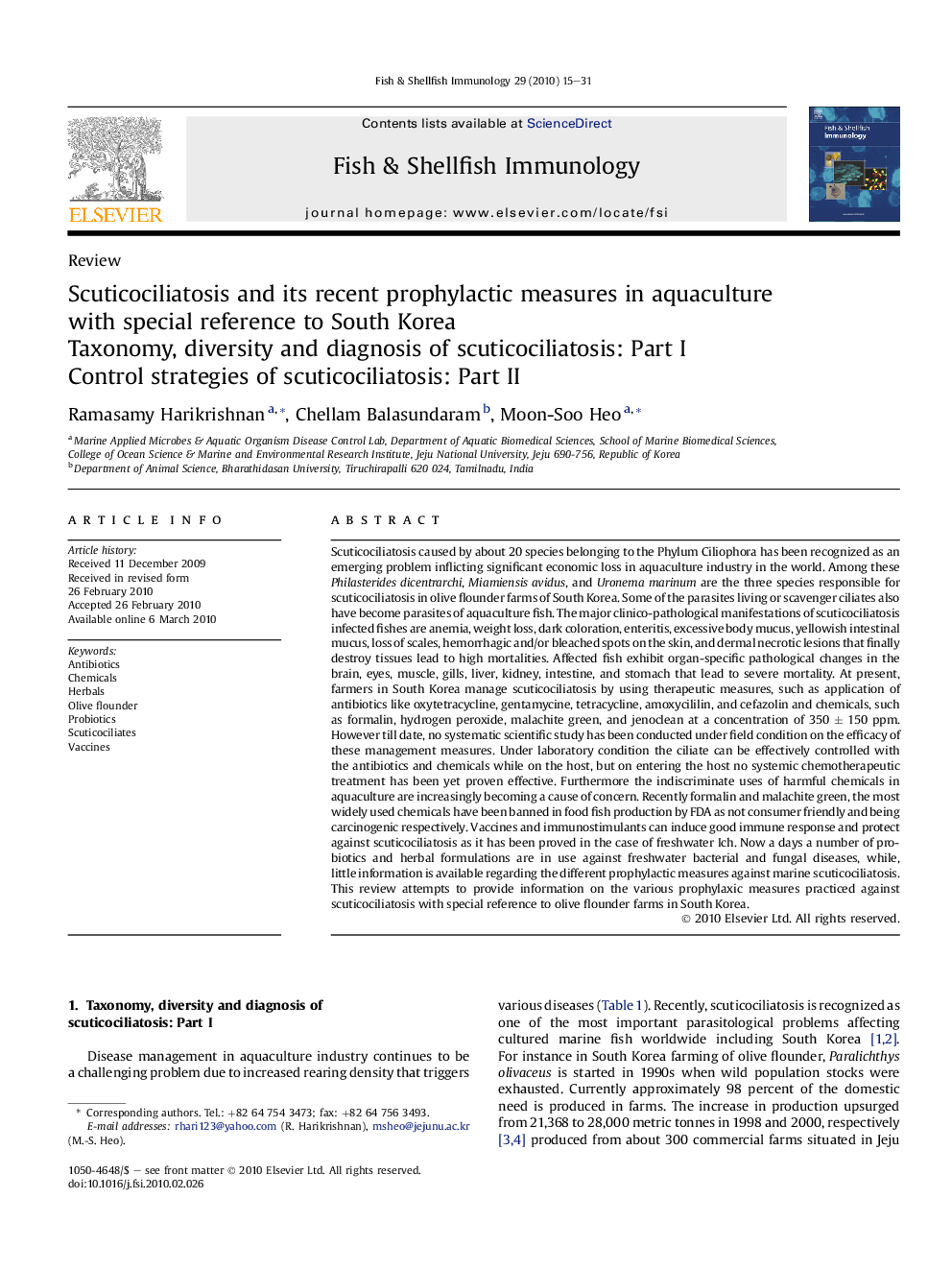| Article ID | Journal | Published Year | Pages | File Type |
|---|---|---|---|---|
| 2432792 | Fish & Shellfish Immunology | 2010 | 17 Pages |
Scuticociliatosis caused by about 20 species belonging to the Phylum Ciliophora has been recognized as an emerging problem inflicting significant economic loss in aquaculture industry in the world. Among these Philasterides dicentrarchi, Miamiensis avidus, and Uronema marinum are the three species responsible for scuticociliatosis in olive flounder farms of South Korea. Some of the parasites living or scavenger ciliates also have become parasites of aquaculture fish. The major clinico-pathological manifestations of scuticociliatosis infected fishes are anemia, weight loss, dark coloration, enteritis, excessive body mucus, yellowish intestinal mucus, loss of scales, hemorrhagic and/or bleached spots on the skin, and dermal necrotic lesions that finally destroy tissues lead to high mortalities. Affected fish exhibit organ-specific pathological changes in the brain, eyes, muscle, gills, liver, kidney, intestine, and stomach that lead to severe mortality. At present, farmers in South Korea manage scuticociliatosis by using therapeutic measures, such as application of antibiotics like oxytetracycline, gentamycine, tetracycline, amoxycililin, and cefazolin and chemicals, such as formalin, hydrogen peroxide, malachite green, and jenoclean at a concentration of 350 ± 150 ppm. However till date, no systematic scientific study has been conducted under field condition on the efficacy of these management measures. Under laboratory condition the ciliate can be effectively controlled with the antibiotics and chemicals while on the host, but on entering the host no systemic chemotherapeutic treatment has been yet proven effective. Furthermore the indiscriminate uses of harmful chemicals in aquaculture are increasingly becoming a cause of concern. Recently formalin and malachite green, the most widely used chemicals have been banned in food fish production by FDA as not consumer friendly and being carcinogenic respectively. Vaccines and immunostimulants can induce good immune response and protect against scuticociliatosis as it has been proved in the case of freshwater Ich. Now a days a number of probiotics and herbal formulations are in use against freshwater bacterial and fungal diseases, while, little information is available regarding the different prophylactic measures against marine scuticociliatosis. This review attempts to provide information on the various prophylaxic measures practiced against scuticociliatosis with special reference to olive flounder farms in South Korea.
